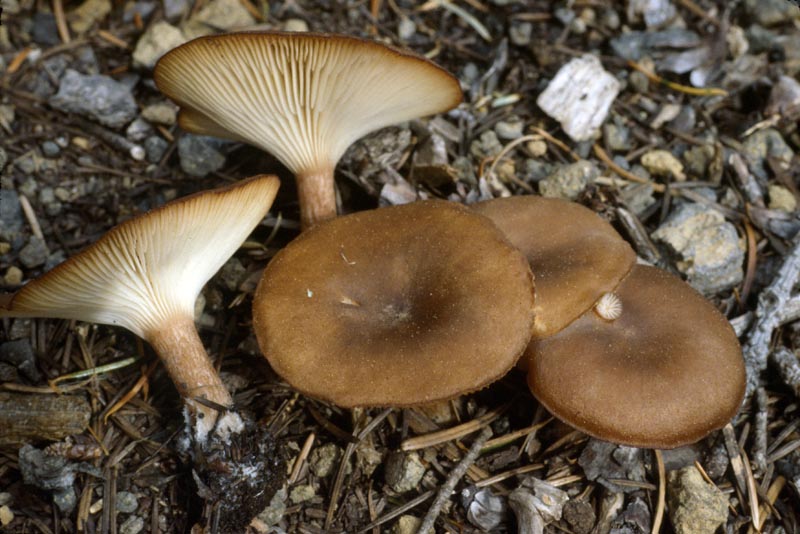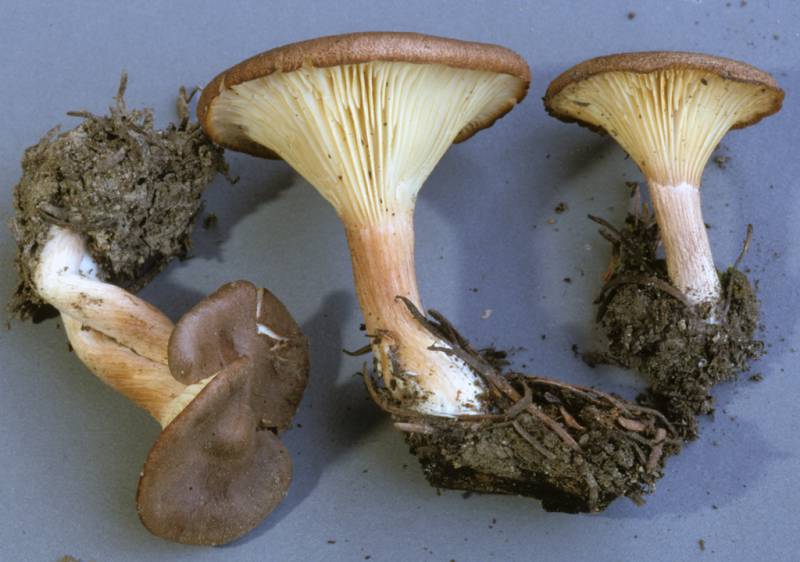Distribution: Broad Widespread, often common, and variable species
Conservation Status: Not of concern
The mushrooms are small to somewhat larger, broadly funnel-shaped, and usually watery brown to tan usually with some cinnamon or pink mixed in, and paler pinkish buff in age. The name “squamulosa” comes from the small scales that occur in the center of the cap, sometimes extending to the margin. The stipe is colored like the cap, with tomentum at the base and a few white strands. The gills are decurrent, often forked, and whitish to pinkish buff in contrast to the darker cap and stipe. The odor is fungoid to farinaceous. In western North America we have long recognized varieties montana H. E. Bigelow and sicca H. E. Bigelow but these are difficult to separate from one another and from variety squamulosa. C. squamulosa occurs on needles under conifers and in mixed woods with alder, but can be found along roads in open areas as well. Recently, it was been transferred to Infundibulicybe by Harri Harmaja.
Sources: Trudell, Steve and Joe Ammirati. Mushrooms of the Pacific Northwest. Portland, Timber Press, Inc. 2009.
PNW Herbaria: Specimen records of Clitocybe squamulosa in the Consortium of Pacific Northwest Herbaria database.
CalPhotos: Clitocybe squamulosa photos.





